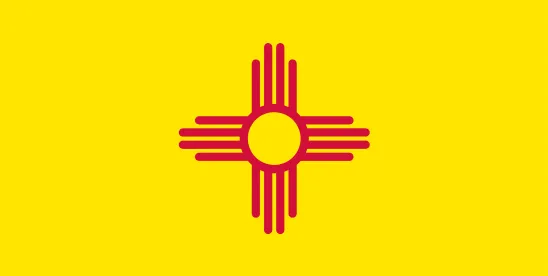On April 8, 2025, New Mexico Governor Michelle Lujan Grisham (D) signed the Per- and Poly-Fluoroalkyl Substances (PFAS) Protection Act (HB 212). Like Minnesota and Maine, New Mexico will begin phasing out certain consumer products containing intentionally added PFAS, defining PFAS as “a substance in a class of fluorinated organic chemicals containing at least one fully fluorinated carbon atom.” In 2032, New Mexico will prohibit products containing intentionally added PFAS unless the use of the PFAS is designated as a currently unavoidable use (CUU). Similar to Minnesota, New Mexico will also require manufacturers of products containing intentionally added PFAS to report certain information. New Mexico will exempt several products, however, from both the prohibition and reporting requirements. Most notably, the exemptions include products containing certain fluoropolymers.
Prohibited Products
In New Mexico, beginning January 1, 2027, a manufacturer may not sell, offer for sale, distribute, or distribute for sale the following products containing intentionally added PFAS:
- Cookware;
- Food packaging;
- Dental floss;
- Juvenile products; and
- Firefighting foam.
Beginning January 1, 2028, New Mexico will prohibit manufacturers from selling, offering for sale, distributing, or distributing for sale the following products containing intentionally added PFAS:
- Carpets or rugs;
- Cleaning products;
- Cosmetics;
- Fabric treatments;
- Feminine hygiene products;
- Textiles;
- Textile furnishings;
- Ski wax; and
- Upholstered furniture.
Beginning January 1, 2032, products containing intentionally added PFAS that are not exempt under New Mexico’s statute will be banned unless the use of the PFAS is determined to be a currently unavoidable use (CUU).
The products that New Mexico will prohibit are similar to the products that Minnesota and Maine have already prohibited or will be prohibiting. On January 1, 2025, Minnesota prohibited intentionally added PFAS in carpets or rugs, cleaning products, cookware, cosmetics, dental floss, fabric treatments, juvenile products, menstruation products, textile furnishings, ski wax, and upholstered furniture. As of January 1, 2025, Maine prohibits intentionally added PFAS in carpets or rugs, fabric treatments, and fabric treatments that do not contain intentionally added PFAS but are sold, offered for sale, or distributed for sale in a fluorinated container or in a container that otherwise contains intentionally added PFAS. Beginning January 1, 2026, Maine will prohibit intentionally added PFAS in cleaning products, cookware, cosmetics, dental floss, juvenile products, menstruation products, textile articles (with exception), ski wax, upholstered furniture, and products listed that do not contain intentionally added PFAS but are sold, offered for sale, or distributed for sale in a fluorinated container or in a container that otherwise contains intentionally added PFAS. Beginning January 1, 2029, Maine will prohibit intentionally added PFAS in artificial turf and outdoor apparel for severe wet conditions unless accompanied with a disclosure: “Made with PFAS chemicals.” Both Minnesota and Maine will prohibit products containing intentionally added PFAS beginning January 1, 2032, unless the use is a CUU, and Maine will prohibit products that do not contain intentionally added PFAS but that are sold, offered for sale, or distributed for sale in a fluorinated container or in a container that otherwise contains intentionally added PFAS. As amended last year, Maine will prohibit intentionally added PFAS in cooling, heating, ventilation, air conditioning, and refrigeration equipment, as well as in refrigerants, foams, and aerosol propellants as of January 1, 2040.
Reporting Requirements
On or before January 1, 2027, New Mexico will require manufacturers of products containing intentionally added PFAS to report certain information, including:
- A brief description of the product, including a universal product code (UPC), stock keeping unit (SKU), or other numeric code assigned to the product;
- The purpose for which the PFAS is used in the product;
- The amount of each PFAS in the product, identified by its Chemical Abstracts Service Registry Number® (CAS RN®) and reported as an exact quantity determined using commercially available analytical methods or as falling within a range approved for reporting purposes by the New Mexico Environment Department (NMED);
- The name and address of the manufacturer and the name, address, and phone number of a contact person for the manufacturer; and
- Any additional information requested by NMED as necessary.
NMED may grant a waiver to a manufacturer if NMED determines that substantially equivalent information is publicly available. NMED may enter into an agreement with one or more states to collect information and may accept information from a shared system as meeting the information requirements.
As reported in our June 14, 2023, blog item, Minnesota will require manufacturers of products containing intentionally added PFAS to submit similar information on or before January 1, 2026. According to the Minnesota Pollution Control Agency (MPCA), it is working with the Interstate Chemicals Clearinghouse (IC2) to modify its High Priority Chemicals Data System (HPCDS) database as the reporting platform for its requirement. Maine had a similar reporting requirement in the statute enacted in 2021, but the governor signed a bill in April 2024 amending the statute so that the reporting requirement applies only to products that receive a CUU determination. More information on the 2024 amendments to Maine’s statute are available in our May 24, 2024, blog item.
Exemptions
New Mexico exempts several products from both the prohibition and reporting requirement. As stated earlier, Maine amended its reporting requirement to apply only to products with a CUU determination. Maine’s 2024 amendments included the addition of several exemptions to the statute as noted below. Minnesota’s statute has fewer exemptions, which are also noted below. The exemptions in New Mexico include:
- A product for which federal law governs the presence of a PFAS in the product in a manner that preempts state authority (Maine);
- Used products offered for sale or resale (Maine, Minnesota);
- Medical devices or drugs and the packaging of the medical devices or drugs that are regulated by the U.S. Food and Drug Administration (FDA), including prosthetic and orthotic devices (Maine, Minnesota (reporting will still be required));
- Cooling, heating, ventilation, air conditioning, or refrigeration equipment that contains intentionally added PFAS or refrigerants listed as acceptable, acceptable subject to use conditions, or acceptable to narrowed use limits by the U.S. Environmental Protection Agency (EPA) pursuant to the Significant New Alternatives Policy (SNAP) Program, 40 C.F.R. Part 82, Subpart G and sold, offered for sale, or distributed for sale for the use for which the refrigerant is listed pursuant to that program (Maine will prohibit these products on January 1, 2040);
- A veterinary product and its packaging intended for use in or on animals, including diagnostic equipment or test kits and the veterinary product’s components and any product that is a veterinary medical device, drug, biologic, or parasiticide or that is otherwise used in a veterinary medical setting or in veterinary medical applications that are regulated by or under the jurisdiction of:
- FDA;
- The U.S. Department of Agriculture (USDA) pursuant to the federal Virus-Serum-Toxin Act; or
- EPA pursuant to the Federal Insecticide, Fungicide, and Rodenticide Act (FIFRA), except that any such products approved by EPA pursuant to that law for aerial and land application are not exempt from this section (Maine);
- FDA;
- A product developed or manufactured for the purpose of public health or environmental or water quality testing (Maine);
- A motor vehicle or motor vehicle equipment regulated under a federal motor vehicle safety standard, as defined in 49 U.S.C. Section 30102(a)(10), except that the exemption does not apply to any textile article or refrigerant that is included in or as a component part of such products (Maine);
- Any other motor vehicle, including an off-highway vehicle or a specialty motor vehicle, such as an all-terrain vehicle, a side-by-side vehicle, farm equipment, or a personal assistive mobility device (Maine);
- A watercraft, an aircraft, a lighter-than-air aircraft or a seaplane (Maine);
- A semiconductor, including semiconductors incorporated in electronic equipment, and materials used in the manufacture of semiconductors (Maine);
- Non-consumer electronics and non-consumer laboratory equipment not ordinarily used for personal, family, or household purposes (Maine);
- A product that contains intentionally added PFAS with uses that are currently listed as acceptable, acceptable subject to use conditions, or acceptable subject to narrowed use limits in EPA’s rules under the SNAP Program; provided that the product contains PFAS that are being used as substitutes for ozone-depleting substances under the conditions specified in the rules;
- A product used for the generation, distribution, or storage of electricity;
- Equipment directly used in the manufacture or development of the products listed above;
- A product for which the NMED Environmental Improvement Board (EIB) has adopted a rule providing that the use of PFAS in that product is a CUU; or
- A product that contains fluoropolymers consisting of polymeric substances for which the backbone of the polymer is either a per- or polyfluorinated carbon-only backbone or a perfluorinated polyether backbone that is a solid at standard temperature and pressure.
Testing Required and Certificate of Compliance
If NMED has reason to believe that a product containing an intentionally added PFAS is being sold, offered for sale, distributed, or distributed for sale, it may direct the manufacturer to provide it with testing results within 30 days that demonstrate the amount of each PFAS in the product, identified by its CAS RN and reported as an exact quantity or as falling within a range approved for reporting. If testing demonstrates that the product does not contain intentionally added PFAS, the manufacturer will provide NMED with a certificate of compliance attesting that the product does not contain an intentionally added PFAS, the testing results, and any other relevant information.
Minnesota has similar provisions regarding testing and certificates of compliance. The Maine Department of Environmental Protection (MDEP) may direct the manufacturer to provide within 30 days a certificate attesting that the product does not contain intentionally added PFAS.
Commentary
Although the requirements enacted by New Mexico, Maine, and Minnesota are similar, there are some key differences. Most of the products exempted in 2024 from Maine’s prohibitions are included in New Mexico’s statute, as well as a provision exempting fluoropolymers that “consist[] of polymeric substances for which the backbone of the polymer is either a per- or polyfluorinated carbon-only backbone or a perfluorinated polyether backbone that is a solid at standard temperature and pressure.” Bergeson & Campbell, P.C. (B&C) agrees that fluoropolymers should be distinguished from the broad class of PFAS. The exemption here may lead, however, to future litigation or amendment. The enacted definition includes the fluoropolymer polytetrafluoroethylene (PTFE), better known as TeflonTM. While New Mexico will ban cookware containing intentionally added PFAS, the best known example — Teflon-coated frying pans — will be exempt from both the prohibition and reporting requirements. Non-governmental organizations (NGO) may argue that legislatures lacking a chemical background did not appreciate that the exemption would extend to Teflon-coated cookware, while manufacturers will maintain the safety of fluoropolymers. The inclusion of the exemption is scientifically grounded and reflects the entirely sensible view that products posing no risk should not be banned. Other states are expected to follow New Mexico’s lead.
Each state varies in what reporting will be necessary. Maine dropped its broad reporting requirement and will require reporting only for products with a CUU determination. Minnesota will require reporting for all products, including those otherwise exempt from the prohibition requirements, including medical devices. New Mexico will require reporting only for products that do not have an exemption (thus excluding products that have a CUU determination and medical devices). Minnesota and New Mexico will require similar information, and with Minnesota’s reporting currently due on or before January 1, 2026, it may be that reporting to New Mexico will not be necessary since the enacted law allows NMED to grant a waiver to a manufacturer if NMED determines that substantially equivalent information is publicly available. NMED may also accept information from a shared system as meeting the information requirements.
The testing envisioned by New Mexico and Minnesota that can demonstrate the amount of each PFAS in the product, identified by CAS RN and reported as an exact quantity or as falling within an approved range, all within 30 days, is beyond the current technical capabilities. With thousands of substances meeting the states’ definition of PFAS as “a class of fluorinated organic chemicals containing at least one fully fluorinated carbon atom,” it is not yet possible to run a single test and determine the specific PFAS in a particular product. To date, the current test used, total organic fluorine (TOF), measures only the total amount of fluorine in a sample that is bound to organic compounds.
Since enacting its statute in 2021, Maine has amended it several times, and there are currently several bills in the Minnesota legislature that would amend its law. As reported in our April 11, 2025, blog item, the Maine Board of Environmental Protection (MBEP) approved MDEP’s December 2024 proposed rule regarding PFAS products during its April 7, 2025, meeting. Under the approved rule, CUU requests for products scheduled to be prohibited January 1, 2026, in Maine are due June 1, 2025. Although Minnesota requested comments in November 2024 on its planned PFAS in products reporting and fee rule, it has yet to issue a proposed rule, despite the rapidly approaching January 1, 2026, deadline. The state regulatory landscape remains fluid, and stakeholders are advised to stay tuned.




 />i
/>i

